Japanese are still one of the worst people in the world.A look at their diet shows them because this is how we can benefit from it.
If we want to lose weight, we often start with strict diets, which then do not perform in a few days or weeks for all strict rules.In fact, it's so simple: Let's look at the worst people - in Japan.
There they treat food with respect and enjoy it.
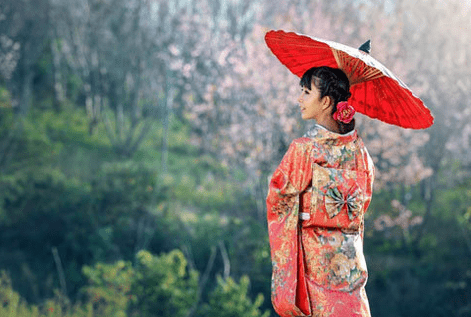
Japanese diet
Travel to Japan.The selection of products
Manysquirrel: The main ingredients of Japanese diet are fish, rice and vegetables.As well as soy and fruits.
After more careful examination, this is like
- rich in protein,
- low -lust
- And the gluten -free diet.
- FishIt contains many omega-3 fatty acids that are useful.
- VegetablesThey contain the necessary vitamins and fill the stomach well.
- Don't be afraid of carbohydrates: At first glance it seems that with the ubiquitous phobia for carbohydrates, the incredible amount of white rice is eaten in Japan.Obviously, this is not too harmful to flames.RiceIt does not contain gluten and contains a little fat.
- Soupand fermented dairy products.That they don't eat in Japandairy products.
- AlthoughcerealsSometimes they are used, for example, in the form of pasta, it is not the main nutrition product.
- MeatThey eat much less than fish.
- But the Japanese likesEnzymatic productsSuch as Miso or Kimchi.They contain probiotics that are useful for intestines.This, in turn, plays an important role in weight loss.And yet another thing we can adopt from the Japanese: they eat a lot of soup even for breakfast.
Travel to Japan.Methods of cooking
In Japan, food is mainly steamed, stew or grill.All of these types of preparation are done almost without fat.
Of course, there is also fried foods, for example, a popular rhythm, but then used as a dish only in small quantities.In Japan, the presentation and design of the dish is also important.Asian products are useful, delicious and contribute to weight loss.
In Japanese, to eat consciously
In Japan, food is considered an independent action in which you have to focus.Foods must be eaten slowly and consciously and enjoy it.Therefore, it is not traditionally eaten by "incidental" or "goes".That is, neither during a walk, nor in the subway, nor during work, nor when you watch TV.Of course, this is not forbidden, but, in fact, a diet, especially when it loses weight, must be consciously done.With this method of absorbing food, it becomes a felt feeling of satiety.Since business days and school days in Japan may be very large, it also means that there are longer breaks to eat.AlsoportionsLess in Japan.You won't see a plate overloaded with food.
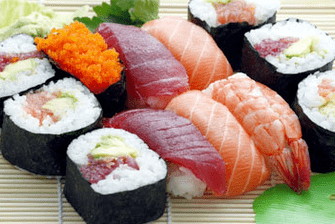
The weight comes with fast food
Slow foods (slow food)In Japan in trend.If you imitate this, you can lose weight deliberately, do not starve.However, it should be noted that in Japan it is increasingly emerging from the west of new trends: for example fast food.Previous habits in food disappear ...
This has consequences: the Japanese also recover when they say goodbye to their traditional food!However, the country is also struggling quite harsh with it, Japan in 2009 took decisive measures against the causes of overweight.Medical exams are regularly performed in all municipalities and large companies.Companies should pay more for medical insurance if their employees are overweight or high blood pressure, high blood lipids or increased blood sugar.Given such measures, many Japanese prefer to return to Miso-Supa with fish instead of toast in the morning.
How long does Japanese diet last?
Time and possible weight loss may vary.Japanese diet should be observed at least four weeks.This time is enough to stimulate fat burning.There are people who have lost3to8One kilo in four weeks with a diet.The result can be increased even further if you start a sports program.
- During diet, many vegetables and fibers are used.Diet plan provides1200 caloriesper day.
- Mainly recommended rice, fish and vegetables.
- Drinks: Very green tea and water.
- Take care of fresh cooking - without finished products.
- Get sports or train for durability.
- Draw enough time for cooking.
Consult a doctor.- Any changes in diet can lead to diseases.The reasons are mainly mental and due to low calorie consumption.Consult a doctor if the symptoms are maintained.
Advantages of Japanese diet
Japanese diet- This is a healthy mixed diet.A lot of attention is given to fresh produce and a balanced dishes.
The disadvantages of Japanese diet
- Low -calorie consumption, this can cause a sense of hunger and adversity.For people with overweight, total calorie consumption can still be very low.
- Cooking fresh dishes can be tiring long -term for those who are used to fast food diet.
- Spontaneous visits to a café or restaurants with friends face a choice.
- Nutrition requires a lot of endurance.
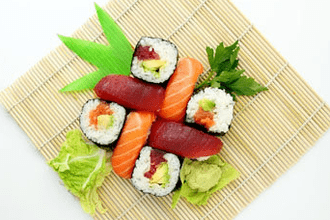
But those who successfully end the Japanese diet will be rewarded with a greater loss of overweight.
If you want to see great hits, make a sports program.Make sure you consume enough protein.Otherwise, you cannot increase muscle mass.In the worst case, you will lose your muscles.Bad sports and other large loads should be avoided.
Japanese diet.Menu
All foods must be fresh.The dishes are beautifully cooked, you can play with flowers.Food and enjoyment of food (slow absorption of foods) are also very important.
Breakfast
- 1 tangerine
- 1 cup miso.This typical Japanese soup gives a lot of energy, but it is low fat.By the way, it consists of fish broth, tofu, algae, miso (scented soy paste) and green onions.The recipe below!
- 1 cup green tea
Dinner
- 1 land plate (rough fish with rice), with soy sauce
- cup of pasta with mushrooms
- 1 apple
- A cup of green tea
Dinner
- 1 part of Sashimi (a plate of other fish), soy sauce and basabi (be careful, this water paste that is very acidic)
- 1 cup of whole grain rice
- 1 orange
- A cup of green tea
In addition, exercises (walking or riding a bicycle) are recommended, as well as the pleasure of simple, small things.
And now for "Good Old Times" - Let's make a trip in time, 1975
The Japanese are one of the healthiest people in the world with the largest long life expectancy, during which they remain harmful as a result of exemplary diet.Currently, nippon.com published a study in which it justifies the reasons for the good health of Japanese with their diet.Nutritionists have studied Japanese eating habits for more than half a century.Result:In 1975, Japanese gastronomic habits were appreciated by the highest ratings.
Why the Japanese diet of 1975 was considered a diet model
For many decades, Japanese culture has been influenced by the Western world, especially the western power habits that have spread to the country, and have brought such diseases with them as atherosclerosis and diabetes.The study that tested Japanese diet in mice for several decades - in 2005, 1990, 1975 and 1960.
Result:Mice had better health with a diet plan in Japan since 1975. This mice had the lowest risk of diabetes and healthy liver.
Cause:The Japanese diet average contained a higher percentage of vegetables, fruits, algae and seafood in that year.In addition, in 1975, the diet is dominated by a variety of methods of kneaded spices and a larger variety of herbs.In addition, the consumption of juices and sugary soft drinks was not as common in Japan at that time as it is today - drinks are considered unhealthy in large quantities.
After a 48 -week study, the researchers found that mice supplied the Japanese diet of 1975, age more slowly and had better memory than mice in the 2005 diet.
But can these results be transferred to people?A study conducted by the Ethics Committee of Tohoku University Research in Sendai, Japan, "Der Tōhoku Uni, Sendai, proved that the 1975 diet has the same beneficial effects on humans. And the group of participants who followed the 1975 diet during a 28 -day diet during a period of 28 days.2005. In the first group, cholesterol levels were lower, as was the risk of diabetes.
In summary, we can say thatJapanese food 1975Compared to modern diet in Japan - and typical western eating habits today - it is healthier in many ways.This healthier lifestyle and diet reduces the risk of diabetes, cholesterol levels in the long run, reduces blood lipids and visceral fat, weight loss is positive side effect.
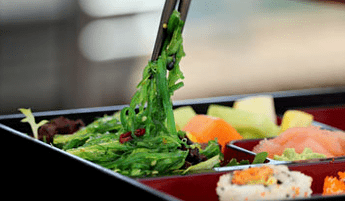
The 1975 diet, along with regular physical exercises, contributes to weight loss.
- Variety:The daily menu usually consists of many small different dishes served with soup and rice - instead of a large main dish.
- Friday:The most popular three types of dishes made in 1975 boiled, steam or raw, also roasted.Heat and baking of freedom were less frequently used.This form of preparation has a consequence of the fact that the most significant nutritional values are lost in the heat.For example, fatty fish, such as COD, contain significant omega-3 fatty acids.After frying, the fish contains only one third of the original fat compared to raw fish, such as sashim.
- Ingredients:The 1975 diet is particularly rich in soybeans, seafood, tubers and green and yellow vegetables (including rnicons), fruits, algae, mushrooms and green tea.Eggs, dairy products and meat were also consumed in 1975, but only in moderate quantities.
- Spices:Instead of salt and sugar to taste, soy sauce, vinegar and grace are used, fermented spices and fish broth.
Miso soup- It is a Japanese national dish, which is quickly prepared and very aromatic.The main recipe contains very few ingredients - you can enrich it as you wish.Miso-sp is often eaten for breakfast in Japan, but also as a snack or dish.With the filling, the soup becomes the main dish.
As a base for a soup, you will only need two ingredients:
Mizopasta:This spicy paste consists of soybeans and - depending on the variety - of different cereals, such as rice or barley.The ingredients are salted and fermented in barrels with the help of So -Called Mold of Coji.There are light and dark, sweet and sharp Miso paste.Thus, the choice of variety has a great effect on the taste of the Miso soup.Mizopasta is considered very useful because it contains probiotic lactic bacteria formed during fermentation.Dasha:The Japanese fish broth is made from feta feta and dried bonito flakes (mackerel or tone type: "Katsuo-bushi"-"Katsuo-Busi").If you want to cook the Miso vegetarian soup, you can use the dried Shiitaka and, possibly, the Maitaka or Enoki mushrooms instead of the bonito flakes.
Miso soup: Basic recipe
For four small Miso soup portions, you will need the following ingredients:
- 750 milliliters of Dasha
- about two or three tablespoons of Miso-Pasta
Use the miso-poste of your choice: In addition to soy, Shiro-Miso also contains rice and has a rather soft and sweet taste.The darkest varieties of Miso, such as Genmai or Hatcho Miso, are more spicy.
How to cook the Miso soup
-
Heat the dasha broth - but not cook.
-
Pass the miso-pass through the sieve and mix well with the broth.First, use only part of the quantity, since Paste Miso has a very salty taste.Try the soup and then add more to Miso pastes if necessary.
-
Add the ingredients of your choice to a Mis-Sup in a few minutes before serving.Serve the final soup in cups.By the way, in Japan, the soup is eaten with sticks for food, and then the broth is drunk by the cup.
Miso soup recipe: additives and spices
For your soup, you can prepare different ingredients.In Japan, great attention is paid to the fact that the ingredients are cut even - so the finished soup looks very beautiful.Here are some examples to enrich your Miso soup:
- Cooked rice or paste (for example, buckwheat dogs)
- Tofu cut by cubes
- Onions or green onions, cut into thin rings
- Mushrooms, chopped
- Kohlrabi, chopped
- Sections of snow
- Spinach sheet, choi park or mangold
- Fried vegetables such as broccoli, pepper or carrots
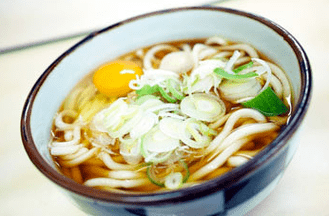
Although the Miso soup is very sharp in itself, it may be seasoned with many spices.For example:
- soy sauce
- A little like lime
- Japanese wostershire sauce
- A few drops of sesame oil
- A small ginger powder and / or chili pepper.
- You can also cut fresh ginger and / or pepper into thin slices and leave in a soup.
Advice:For many ingredients, you should go to an Asian store, but in regional markets you can buy onions, mushrooms, kohlrabi and co.
Tofu and other soy products are now produced in other countries.
Japaneseeat:
- Rice, fish (raw and cooked), vegetables, all and algae
- Small portions
- Various foods (up to 30 different per day)
- For breakfast soup, fish, rice, vegetables
- Fresh seasonal raw products
Almost don't eat desserts don't eat bread
Drink mainly green tea
Do not fry in oil, use only a little vegetable oil for frying
go a long way and go on a bike
The top three products
Rice/fish (algae)/soy (tofu)
Drink: Green tea
And another secret from the Japanese
Do you want to become thinner in the middle of 12 cm?- If so, do the following respiratory exercise!
Great!
- Run everyday!
- Run before breakfast!
- Never rush!
- The legs put each other in a convenient distance.The knees, of course, "look" forward.
- Move body weight to the posterior foot, straighten the forehead.
- Inhale for 3 seconds.
- Exhale for 7 seconds.Relax the muscles.Break your hands.
Exercise runs at the beginning of 3 minutes and then increase the time in 10 minutes.














































































